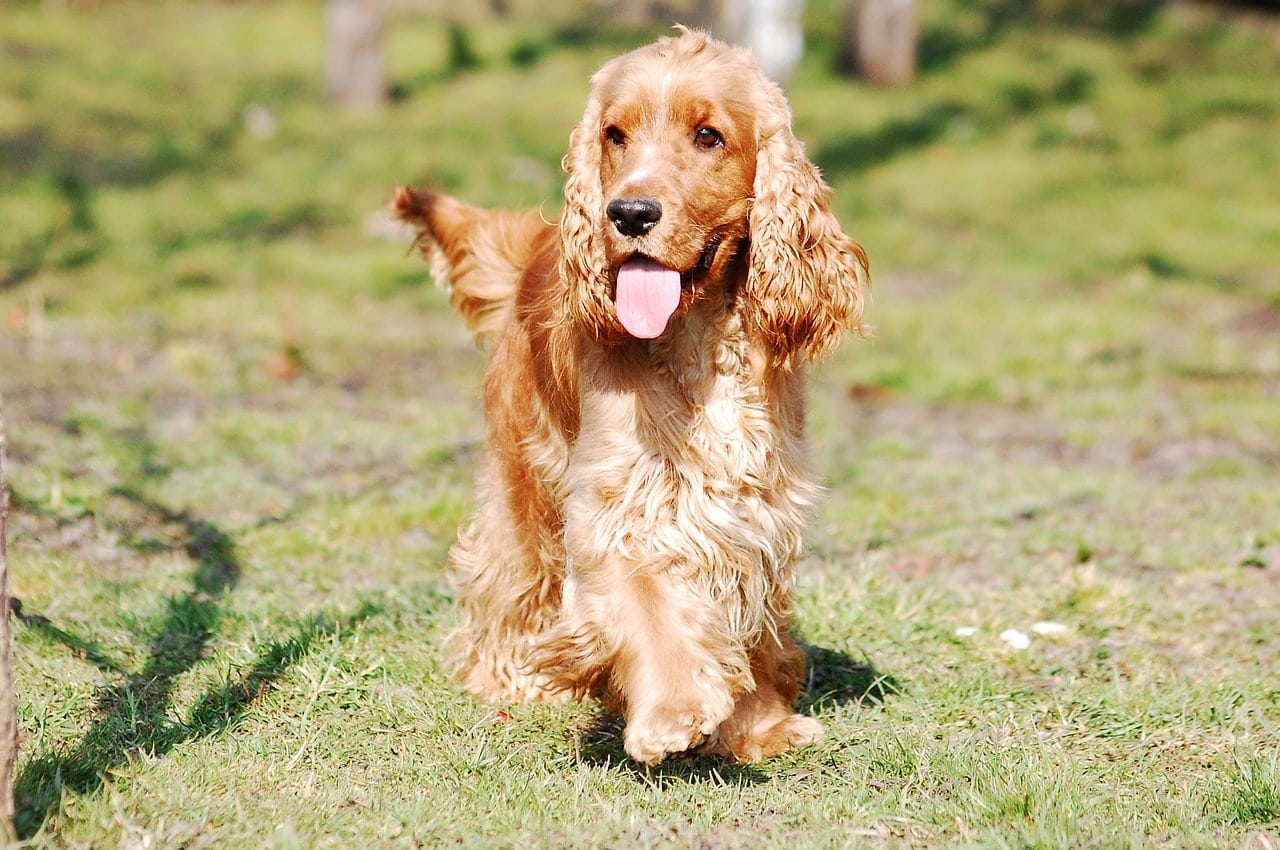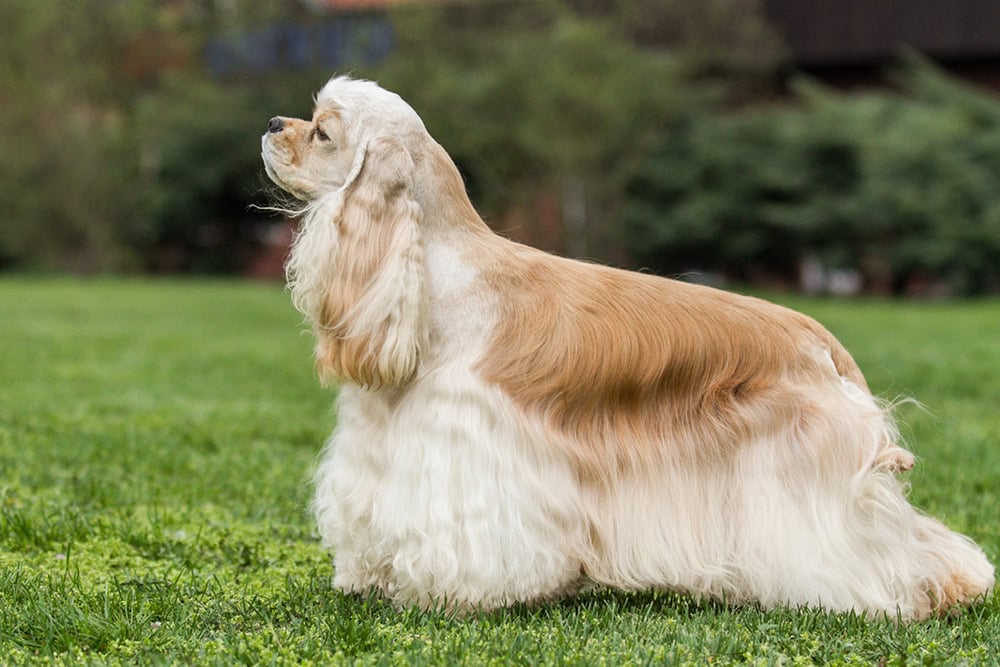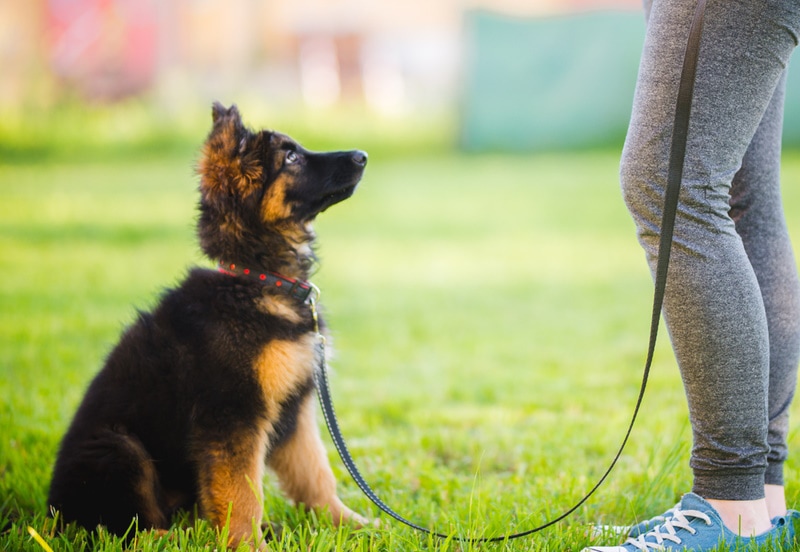What Were Cocker Spaniels Bred For? Breed History Explained
Updated on

Cocker Spaniels are descended from one of the oldest dog breeds in history: the Spaniel. They have been recognized as a distinct breed since 1892. Modern Cocker Spaniels are bred for different purposes in England and America. Both varieties originated as hunting dogs, but the English Cocker Spaniel is now bred primarily for show, and American dogs are bred for hunting purposes. This has evolved into two distinct Cocker Spaniel breeds: the English Cocker Spaniel and the American Cocker Spaniel.
The history of the Cocker Spaniel dates back to the 14th century. Let’s take a look at the history of this versatile dog breed.
Breeding History
The term “cocker” refers to the Eurasian woodcock, a type of wading bird. Originally, Cocker Spaniels were bred as hunting dogs in the United Kingdom, with the specialized job of hunting the woodcock. In the United States, Cocker Spaniels were bred to a different standard, specializing in hunting the American woodcock.
The first mention of Spaniels is found in the 14th century in Livre de Chasse by Gaston III, Count of Foix. The Cocker Spaniel isn’t mentioned as a separate breed until the 19th century. Before 1901, Cocker Spaniels were separated into “Field Spaniels” and “Springer Spaniels.” These distinctions were made according to the dog’s weight rather than their purpose.
The foundation sires for modern Cocker Spaniels are Ch. Obo, the ancestor of English Cockers, and his son, Ch. Obo II, is the ancestor of all American Cocker Spaniels alive today. The English and American Cocker Spaniel breeds were recognized as separate breeds from Spaniels in the United States in 1946. The United Kingdom recognized the distinction of the American breed in 1970.

Timeline of the Cocker Spaniel
1300s
Dogs called “Spaynels” are mentioned in early 14th-century writings. While no one is certain of their origin, historians agree that these dogs came from Spain.
1400s
Edward, 2nd Duke of York, mentions Spaniels in his work, The Master of Game. The dogs are introduced as a “type of hound for the hawk.” The content of the text was primarily an English translation of Livre de Chasse, a 14th-century French title.
1800’s
Cynographia Britannica from 1801 contains an entry regarding the “Land Spaniel.” The encyclopedia categorizes the dog breed into two types: the Hawking Springer Spaniel and the Cocking/Cocker Spaniel.
Breed Classification
It is important to note that a “Cocker Spaniel” in the 19th century was a small Field Spaniel. The term referred to several different hunting breeds descended from ancient Spaniels. These breeds included the Norfolk Spaniel, Sussex Spaniel, and the Clumber Spaniel. Some dogs known as Welsh Cockers and Devonshire Cockers were also included under this title.
Prior to the 1870s, the only requirement for classifying a dog as a Cocker Spaniel was a weight less than 25 pounds (11 kilograms). Dogs weighing over 25 pounds were classified as Springer Spaniels. This weight limit remained the only distinguishing characteristic of the breed until 1900.
When the U.K. Kennel Club was established in 1873, breeders began to make distinctions between the pedigrees of Springers and Cockers. English Cocker Spaniels and English Springer Spaniels earned their official distinction as separate breeds by The Kennel Club in 1873.

Tail Docking
Historically, Cocker Spaniels have been subjected to the practice of tail docking, with the majority of archived photos featuring dogs with docked tails. Tail docking involves removing between 1/2 and 2/4 of a dog’s natural tail using a sharp pair of shears.
While the practice seems inhumane to many modern dog owners, at the time, tails were docked to prevent injuries when Cocker Spaniels ran through heavy brush to hunt game.
Since today’s Cocker Spaniels are mostly pets rather than hunters, tail docking is no longer a necessary practice. There are also concerns about the procedure, as tail docking is painful and causes an undue amount of stress on dogs. It can also alter a dog’s gait and balance, which is normally mediated by their tail.
Breed Popularity
By the 1900s, American Cocker Spaniels had captured the heart of the world. An American Cocker Spaniel won Best in Show at the Westminster Club Dog Show in 1921. The breed’s fame didn’t end there, though.
The American Cocker Spaniel held the number-one position for American Kennel Club registrations for 16 years in a row, from 1936 to 1953, and then again from 1983 to 1990. No other breed has ever accomplished this feat. Unfortunately, the popularity of the American Cocker Spaniel led to many looking to profit from it. Puppy mills began churning out Cocker Spaniel pups by the thousands. The dogs involved in these breeding operations were subjected to unsafe, careless, and unethical breeding practices. The breed became plagued with hereditary diseases, including hip dysplasia, eye disorders, and temperament issues.
To put the severity of this situation into perspective, the average dog breed with a predisposition to hereditary disease will have a paragraph or two on their American Kennel Club page regarding the illness. The American Cocker Spaniel has 10 pages devoted to eye diseases alone. Fortunately, the decline in the American Cocker Spaniel’s popularity in recent years is due to public awareness surrounding breeding practices.
The English Cocker Spaniel has encountered few changes from the 20th century onward. They have significantly fewer incidences of health and temperament disorders.
The Future of Cocker Spaniels
Reputable breeders of Cocker Spaniels are now taking the health and temperament of the breed seriously in an attempt to create a population of healthy dogs. Breeders are striving to restore the original qualities of the American Cocker Spaniel, including the breeding of hunting dogs.
While the Cocker Spaniel is currently 29th on the American Kennel Club’s popularity list, they are slowly resuming their status as a hunting and sporting breed. For lovers of this beautiful dog breed, this is good news. With breeders working diligently to preserve the Cocker Spaniel’s working abilities while still adhering to breed standards, the future of the Cocker Spaniel breed looks bright. This dog breed is certainly poised to make a comeback.
See also:
- Are Cocker Spaniels Smart? (Signature Traits & Training)
- How to Groom a Cocker Spaniel – 10 Expert Tips
Featured Image Credit: Adriana Morales, Pixabay













